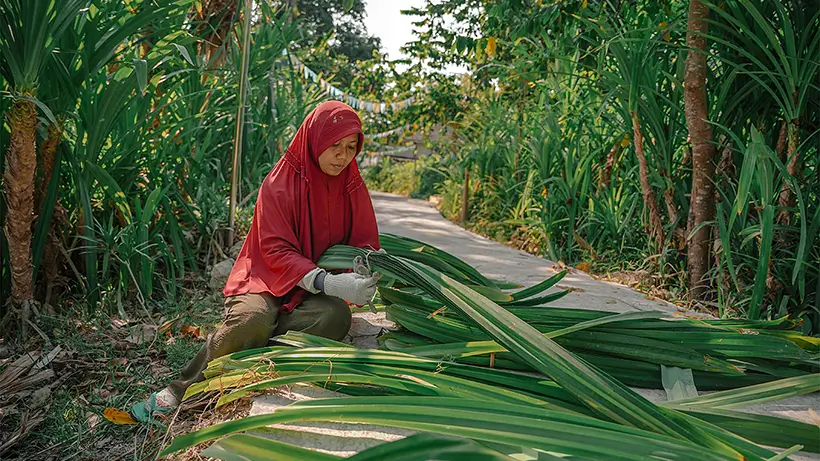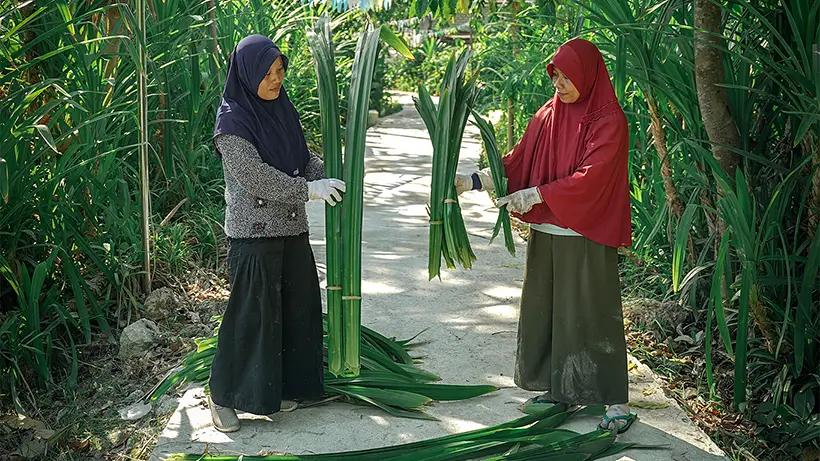Pandan leaves, scientifically known as pandanus amaryllifolius, are a tropical plant native to Southeast Asia, renowned for their long, narrow, and vibrant green leaves. This fragrant herbal plant typically grows to a height of approximately 1 to 2 meters. Its stem is branched and spreading, supporting smooth, thin leaves with pointed tips, measuring 40 to 80 cm in length and 3 to 5 cm in width. When squeezed, the leaves emit a sweet, fragrant aroma, often compared to a blend of vanilla with a touch of fresh grass.
We produce rich fertilizer using our proprietary processing methods. Our planting techniques are carefully maintained with consistent practices to guarantee optimal growth and yield.
In Southeast Asian cuisine, pandan leaves play a significant role, being used extensively as a natural flavoring and coloring agent. They are commonly infused into rice, desserts, and various dishes to impart a unique taste and aroma, elevating the culinary experience. The leaves can also be blended or boiled to extract a bright green juice, which serves as a natural food coloring in traditional sweets and pastries. Pandan leaves’ versatility make them a staple ingredient in the region’s culinary traditions. In some tropical regions, people engage in growing pandan plant not only for cooking but also for their medicinal properties.

To make the best pandan-flavored desserts, it’s essential for growing pandan plant in well-drained soil and plenty of sunlight. Pandan leaves are rich in antioxidants, which help combat free radicals in the body, and have anti-inflammatory properties that make them useful in traditional medicine for relieving headaches, arthritis, and other ailments. Additionally, pandan tea, made from the leaves, is a popular remedy for digestive issues, known to aid in digestion and reduce bloating. The soothing scent of pandan leaves is also used in aromatherapy to promote relaxation and reduce stress.
